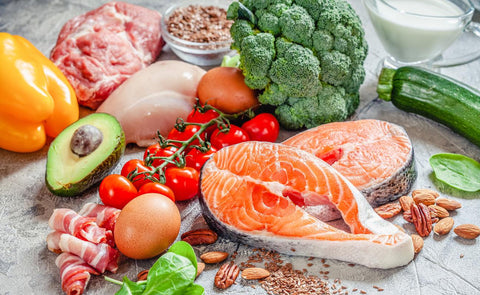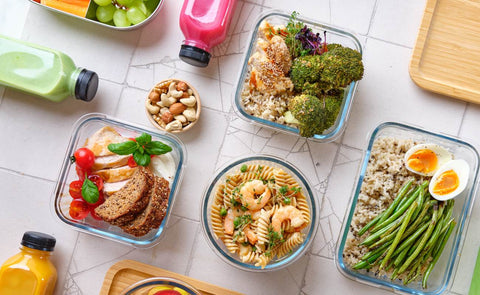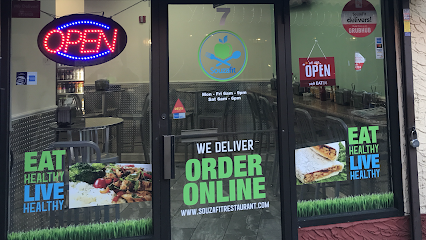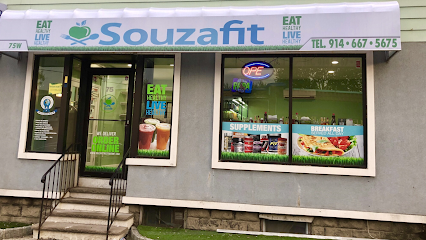When you need to modify your diet to address certain health conditions, a low-fiber diet might be recommended. This regimen involves reducing intake of foods that are rich in fiber, like specific vegetables, fruits, and whole grains. Since your body doesn't digest fiber, it contributes bulk to your stool. Cutting back on high-fiber foods can lead to easier digestion, potentially making your stools more manageable.
A low-fiber diet is often suggested by healthcare providers for individuals dealing with digestive disorders such as irritable bowel syndrome, Crohn’s disease, and ulcerative colitis. It can also be part of the preparatory steps before medical procedures like colonoscopies or surgeries involving the large intestine. Additionally, if you've recently undergone abdominal surgery, a low-fiber diet might be advised. Whether you’re dealing with a temporary concern or preparing for a procedure, this dietary approach can be crucial.
Low Fiber Basics: Getting Started
To begin, it's essential to grasp the essentials of a low-fiber diet. Understanding which foods contain high levels of fiber helps you know what to limit or steer clear of. Examining food labels is crucial to identify unexpected fiber sources, allowing you to select products that align with a low-fiber lifestyle.
Organize your meals and snacks for the week, emphasizing those that are low in fiber. Stock your pantry with these items to maintain your dietary routine. Staying hydrated is also vital, particularly if you're experiencing watery stools. Aim for eight to ten glasses of water each day, adjusting based on your thirst levels.
Who Should Consider a Diet Low in Fiber?
A diet low in fiber may be advised for various health conditions and medical circumstances. If you have digestive disorders like Crohn’s disease, ulcerative colitis, or irritable bowel syndrome (IBS), consuming less fiber could be beneficial during flare-ups to reduce bowel strain and manage symptoms.
For patients scheduled for procedures such as a colonoscopy, adhering to a low-residue diet can help clear the digestive tract, ensuring clearer examination results. Additionally, during certain cancer treatments, which might cause digestive issues like diarrhea, a low-fiber menu can offer some relief.
Before and after surgery involving the digestive system, doctors may recommend reducing fiber intake to minimize bowel movements and aid recovery. Likewise, it can alleviate the discomfort of inflammation or conditions like diverticulitis by lessening digestive workload. A low-fiber approach is often employed as a short-term measure to address specific medical needs and to ease symptoms related to digestive health.
Foods Suitable for a Low-Fiber Diet
Vegetables
When following a low-fiber diet, you can include certain vegetables that are easier to digest. Opt for peeled and seedless options like lettuce (shredded), cucumbers, zucchini, yellow squash, and skinless potatoes. Consider well-cooked options such as green beans, carrots, and beets.
Fruits
Choose fruits that are lower in fiber and gentle on the stomach. These can include fruit juices without pulp, and canned fruits or sauces. Fresh fruits, like ripe bananas, honeydew melon, peaches, and watermelon, can also be eaten in moderation.
Breads and Grains
Focus on refined grains such as white breads, dry cereals, and white pasta. Ensure these items contain less than 2 grams of fiber per serving to help maintain your low-fiber intake. Opt for plain crackers to pair with meals.
Protein
Opt for tender and easy-to-digest proteins like cooked meat, poultry, fish, eggs, and tofu. Smooth peanut butter is a good alternative for those avoiding meats.
Oils
Incorporate butter, margarine, and other smooth sauces into your meals. Plain oils, mayonnaise, and dressings without chunks can offer flavor without excess fiber.
Dairy
Include creamy yogurt, milk, and pudding in your diet. Choose plain or vanilla flavors to keep fiber content low. Hard cheeses, cottage cheese, and kefir can also be good choices for dairy intake.
Day 1
Breakfast: Start your day with scrambled eggs paired with white toast and a small portion of low-fat yogurt.
Lunch: Enjoy a grilled chicken breast accompanied by white rice and steamed carrots.
Dinner: Have baked salmon served with mashed potatoes and soft green beans.
Snacks: Opt for low-fiber crackers with cream cheese or a small serving of canned peaches.
Day 2
Begin your day with a bowl of smooth cereal such as cream of rice, paired with scrambled eggs. For lunch, enjoy a turkey and cheese sandwich on soft white bread, complemented by a serving of applesauce. Dinner features a tofu stir-fry with tender zucchini and white rice. As a sweet treat, savor a smoothie with ripe banana, low-fat milk, and protein powder.
Day 3
Breakfast: Enjoy pancakes made from refined flour drizzled with maple syrup, accompanied by a side of scrambled eggs.
Lunch: Prepare a tuna salad using canned tuna mixed with mayonnaise, served between slices of white bread.
Dinner: Delight in baked chicken breast alongside mashed potatoes and a serving of cooked spinach.
Snacks: Munch on low-fiber crackers paired with cheese and refreshing cubed watermelon.
Day 4
Morning Meal: Start your day with French toast made using white bread. Add a spoonful of Greek yogurt on top and sprinkle with cinnamon for extra flavor.
Midday Meal: Enjoy chicken noodle soup featuring white pasta and tender chicken bits. Pair it with juicy nectarines.
Evening Meal: Savor baked cod served alongside white rice and green beans that have been steamed.
Between-Meal Snacks: Snack on rice cakes complemented by a small portion of canned fruit cocktail.
Day 5
Breakfast: Savor a comforting pancake meal using white flour topped with a dollop of applesauce for a mild sweetness.
Lunch: Prepare a warm grilled cheese sandwich on white bread with a strained tomato soup accompaniment and slices of ripe banana.
Dinner: Enjoy tender pork with creamy mashed sweet potatoes, complemented by soft cooked carrots.
Snack Ideas
- Crackers paired with cottage cheese
- A small dish of canned mandarin oranges
Dessert Options
Indulge in a gentle and easy-to-digest dessert, such as soft, moist french toast with a light sprinkle of powdered sugar.
Day 6
Breakfast: Begin your day with scrambled eggs paired with white bread toast, accompanied by fresh banana slices.
Lunch: Savor a ham and cheese wrap crafted with a soft white tortilla, complemented by a side of potato salad.
Dinner: Enjoy turkey meatballs served on white pasta, alongside tender cooked asparagus.
Snacks: Relish some creamy rice pudding.
Day 7
Your day begins with a breakfast burrito. This satisfies with scrambled eggs and cheese wrapped in a soft white tortilla. For lunch, enjoy a comforting bowl of creamy chicken and rice soup, carefully strained, accompanied by a side of white bread. Dinner features a flavorful beef pot roast alongside smooth mashed potatoes and tender cooked squash. For snacks, opt for low-fiber crackers topped with cream cheese or enjoy a small canned fruit cocktail.
Tips for Preparing Meals
Begin by planning a weekly menu that adheres to a low-fiber diet, ensuring that meals remain enjoyable while meeting dietary guidelines. Focus on essential ingredients such as rice, pasta, potatoes, lean meats, and white bread. Stock up on these basics to make meal preparation smoother.
Choose simple recipes with limited ingredients to prevent digestive discomfort. Equip your kitchen with a quality vegetable peeler for easy removal of skins. This aids in preparing foods that are appropriate for a low-fiber diet. Remember to include snacks and lunch ideas that fit these criteria.







